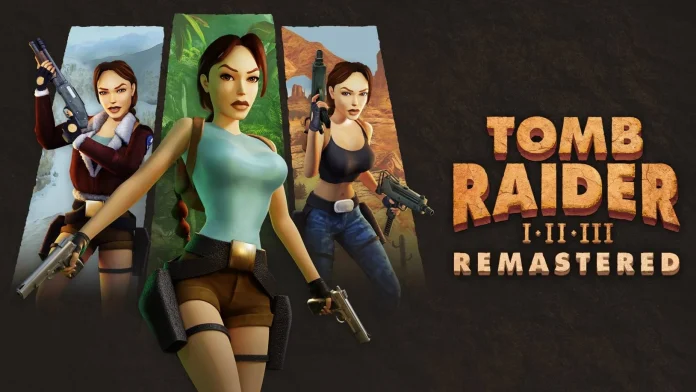When the announcement came that the classic Tomb Raider games were being remastered, a wave of nostalgia washed over me. The original trilogy was a cornerstone of my gaming youth, and I eagerly anticipated revisiting these iconic adventures. In this review, I will share my thoughts and experiences with the remastered versions of Tomb Raider I, II, and III, exploring what has changed, what remains, and whether these games still hold up in today’s gaming landscape.
A Journey Through Time
Before diving into the remastered content, it’s important to acknowledge the significance of the original titles. Released in the mid-90s, the Tomb Raider series introduced players to Lara Croft, a strong female protagonist who became an icon in gaming. The gameplay seamlessly combined platforming, puzzle-solving, and combat, setting a groundbreaking standard for its time.
The remastered collection aims to bring these classic games to modern audiences while preserving the essence that made them beloved. As I booted up the remastered versions, I felt a mix of excitement and apprehension. Would these games feel as magical as I remembered, or would the nostalgia be overshadowed by dated mechanics?
Visual Upgrades
One of the first things I noticed in the remastered collection was the significant visual overhaul. The graphics have been updated with high-definition textures and improved lighting effects, allowing players to appreciate the lush environments and intricate details that were once constrained by 90s technology.
The remaster retains the iconic level designs while enhancing them with modern visual fidelity. For instance, the vibrant jungles of Tomb Raider II and the icy caverns of Tomb Raider III are now more immersive than ever. I found myself pausing frequently to take in the stunning scenery, something I hadn’t done in the original versions.
Gameplay Mechanics
While the visuals have been enhanced, the core gameplay mechanics largely remain intact. This decision is a double-edged sword. On one hand, the original mechanics evoke nostalgia and authenticity. On the other hand, some aspects, particularly the controls, feel somewhat clunky compared to modern standards.
As I played through the remastered games, I appreciated the inclusion of quality-of-life improvements. The ability to save anywhere is a welcome addition, allowing for exploration without the fear of losing progress during challenging sections. Additionally, optional hints for puzzles can assist new players or those who may have forgotten the solutions.
Sound Design
The audio experience in the remastered collection stands out as another highlight. The sound effects and music have been reworked to enhance immersion. The haunting themes that accompany Lara’s adventures now sound richer and more dynamic, elevating the emotional impact of key moments.
I particularly enjoyed the remastered soundtracks, which retain the essence of the original compositions while adding depth. The combination of improved sound effects and music creates an atmosphere that draws players deeper into the world of Tomb Raider.
Challenges and Puzzles
One hallmark of the Tomb Raider series is its cleverly designed puzzles and challenging gameplay. Revisiting these elements in the remastered versions was a rewarding experience. The puzzles still require critical thinking and exploration, and I often found myself stumped, just like in my younger days.
The level design remains as intricate and engaging as I remembered. Each environment is filled with secrets and hidden areas, encouraging exploration. I appreciated that the remaster did not compromise on difficulty, maintaining the sense of accomplishment that comes from overcoming tough challenges.
Nostalgia vs. Innovation
As I played through the trilogy, I couldn’t help but reflect on the balance between nostalgia and innovation. The remastered collection successfully captures the spirit of the originals while making necessary updates. However, some may argue that certain aspects feel outdated, particularly the combat mechanics.
While I enjoyed the combat encounters, they often felt simplistic compared to modern action-adventure titles. The lack of fluidity in movements and animations could be jarring for players accustomed to contemporary gaming experiences. Nonetheless, embracing the nostalgia helped me appreciate the gameplay for what it was, rather than what it could have been.
Accessibility and New Features
The remastered collection introduces various accessibility options, making the games more enjoyable for a wider audience. Features such as adjustable difficulty settings and customizable controls demonstrate a commitment to inclusivity in gaming.
I found these options beneficial, especially for new players or those who may struggle with traditional gameplay mechanics. The remaster strives to cater to both veterans and newcomers, ensuring that everyone can experience the adventures of Lara Croft.
Conclusion
In conclusion, the Tomb Raider I–III Remastered collection is a nostalgic journey that successfully brings classic adventures to a new generation of gamers. While some mechanics feel dated, the visual upgrades, improved sound design, and quality-of-life enhancements make for a compelling experience.
For those who grew up playing these games, the remastered collection offers a chance to relive cherished memories with a fresh perspective. New players will find an engaging introduction to the iconic franchise that laid the groundwork for action-adventure games.
Ultimately, the Tomb Raider I–III Remastered collection is a testament to the enduring legacy of Lara Croft. Whether you’re a longtime fan or a newcomer, diving into these remastered classics is an adventure worth taking.
<iframe width="560" height="315" src="https://www.youtube.com/embed/Q_vH_0gpVlk?si=KsjEcCUGd6gRI8Ki" title="YouTube video player" frameborder="0" allow="accelerometer; autoplay; clipboard-write; encrypted-media; gyroscope; picture-in-picture; web-share" referrerpolicy="strict-origin-when-cross-origin" allowfullscreen></iframe>




.jpg?w=100&resize=100,70&ssl=1)
